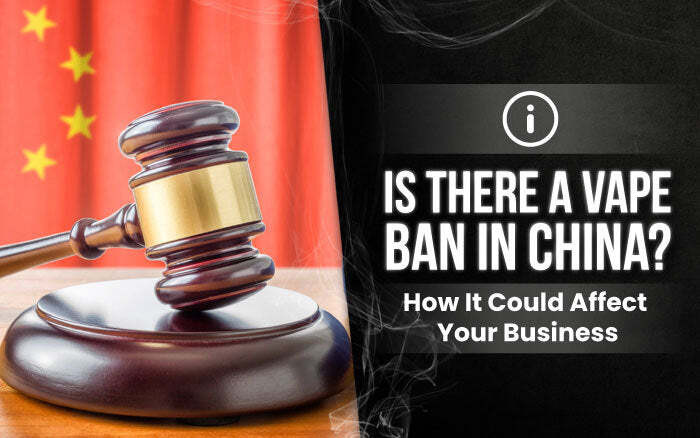Is There a Vape Ban in China? How It Could Affect Your Business
Estimated 0 min read
The finalized regulatory measures below were implemented on May 1, 2022. Technical standards approved by China’s market took effect on October 1, 2022.
Whenever we think about the vape ban, our minds tend to always drift towards states and other places where we can sell products. This is primarily because the flavored vape ban has been a topic of discussion for a few years now, with important states for the commercial market, like California, leading efforts to ban vape flavors under the pretext that they motivate the younger generation to start vaping.
But what would happen if the same type of ban happened where most products are manufactured? What could happen to our imports and our suppliers?
The Chinese vape industry has recently been hit with legislation that covers domestic sales of products containing non-tobacco flavors. This is very similar to what some states in the U.S. are trying to do. But while it will impact the use of flavored vapes in China, it may also affect the exportation of vape products to other countries.
Brief History of the Vape Ban in China
Regulations for the implementation of the Tobacco Monopoly Law of China were amended on November 26th, 2021 to stipulate that e-cigarettes were now subject to the same laws and regulations that cover other tobacco products, including laws that cover exportation.
These measures were announced this year on May 1st but only came into effect on October 1, 2022, after the transition period for companies to shift business models that was extended until September 30, 2022.
This means that companies engaged in wholesale or retail of e-cigarette products now have to receive approval for a license to do so from the State Tobacco Monopoly Administration of China (STMA). This also applies to companies that want to pivot to exports.
China Vape Ban for Export Products
Companies that produce vapes made only for exportation do not have to register products and they can receive production licenses from the STMA. This is a favorable aspect of the law when it comes to importing products to the U.S.
Nevertheless:
Export production has to meet the standards and regulations of the import company. If the import company does not have standards, then the products must instead comply with Chinese standards and regulations.
There are also limits to the amount of vape products that can be carried across borders when leaving China:
- 150 cartridges max/person
- 10 vape devices max/person
- 150 products combining carts and accessories max/person
- Maximum of 300ml atomizers
The Reality of the Chinese Vape Market
China Tobacco is the world’s largest tobacco company, responsible for 95% of tobacco sales in the country, which is to say a third of all adults. The roughly 1.4 billion people that live in China make this a very attractive market for any tobacco products company.
In addition to this, China Tobacco is owned and controlled by the Chinese government. This would explain why the proposed vape ban plans to limit vape exports to other countries that have not fully authorized vape flavor products like the U.S., which still does not have authorization from the FDA for their commercialization.
While the Chinese vape ban could affect U.S. businesses, factories in China may still export to the U.S. after obtaining licenses. Much like PMTAs in the U.S., these licenses are obtained depending on whether the factory meets Chinese government requirements or not, and it’s highly likely that smaller factories will not be able to meet them while larger entities will prevail.







